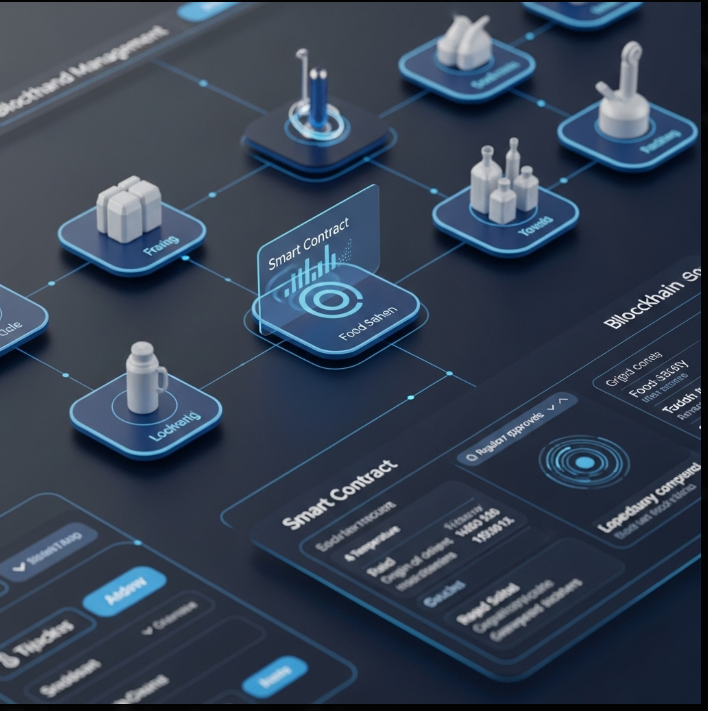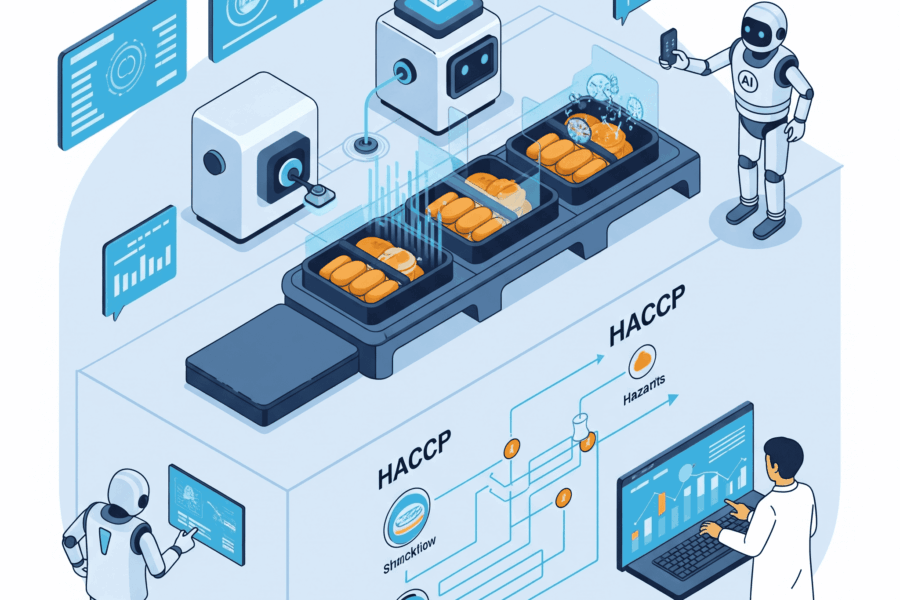The global food industry is under constant pressure to ensure the safety and integrity of its products from farm to fork. The Hazard Analysis Critical Control Point (HACCP) system provides a fundamental framework for managing food safety risks. However, traditional HACCP systems can face challenges related to data silos, lack of transparency, and difficulties in rapid traceability. The emergence of Blockchain technology, a decentralized and immutable Distributed Ledger Technology (DLT), offers a groundbreaking opportunity to significantly enhance HACCP implementation, bolstering food safety assurance, supply chain visibility, and consumer trust.
The Synergy of Blockchain and the Seven HACCP Principles
Blockchain’s core attributes – immutability, transparency (for permissioned participants), security, and decentralization – can be powerfully applied to each of the seven HACCP principles, transforming how food safety data is recorded, shared, and verified.
Principle 1: Enhancing Hazard Analysis with Verifiable Data Sources
While blockchain doesn’t perform hazard analysis itself, it provides a secure and tamper-proof repository for the data used in this critical first step. Information regarding raw material provenance, supplier certifications, historical audit data, and environmental monitoring results can be recorded on a blockchain. This ensures that the hazard identification and risk assessment processes are based on reliable, auditable data, reducing the chances of basing analyses on compromised or incomplete information. The integrity of this foundational data is paramount for an effective food safety plan.
Principle 2: Immutable Records for Critical Control Point (CCP) Determination
The rationale behind identifying specific Critical Control Points (CCPs) and the methodologies used can be documented on a blockchain. This creates an unalterable record of why certain process steps were deemed critical, providing a clear audit trail for regulators and internal reviewers. Any subsequent changes to CCPs, along with their justifications, can also be logged, ensuring transparency in the evolution of the HACCP plan. This supports robust preventive controls and their justification.
Principle 3: Transparent and Secure Establishment of Critical Limits
Once CCPs are identified, critical limits for each must be established. These limits, crucial for maintaining control over hazards, can be recorded on the blockchain. This ensures that there is a single, agreed-upon, and tamper-proof version of these critical operational parameters. Smart contracts can even be programmed to automatically flag any proposed operational changes that might conflict with these established critical limits, adding a layer of automated compliance for process control.
Principle 4: Revolutionizing CCP Monitoring with IoT and Blockchain
This is where blockchain, often integrated with Internet of Things (IoT) devices, demonstrates significant power. Sensors can continuously monitor CCPs (e.g., temperature, humidity, pH, cooking times) and automatically record this data onto the blockchain in real-time. This creates an immutable, time-stamped log of monitoring activities, eliminating manual errors and the possibility of data tampering. For instance, cold chain management can be drastically improved by having verifiable temperature logs throughout transportation and storage, ensuring microbial hazard control. Any deviation from critical limits can trigger alerts via smart contracts.

Key Benefits of Integrating Blockchain into HACCP Systems
The adoption of blockchain technology within HACCP frameworks offers substantial advantages:
- Unprecedented Traceability: Enables rapid and precise farm-to-fork traceability, allowing for quick identification of contamination sources during product recalls and minimizing their scope.
- Enhanced Data Integrity and Security: Immutable records prevent tampering and unauthorized alterations, ensuring the reliability of food safety data.
- Increased Transparency: Provides all permissioned stakeholders (e.g., suppliers, manufacturers, retailers, regulators) with a shared, trusted view of food safety information across the supply chain.
- Improved Efficiency in Audits and Compliance: Streamlines auditing processes by providing readily available, verifiable data, reducing the burden of regulatory compliance.
- Faster and More Targeted Recalls: In the event of a food safety issue, affected products can be quickly identified and removed from the supply chain, minimizing public health impact and economic losses.
- Reduction in Food Fraud: By providing verifiable provenance information, blockchain can help combat issues like product adulteration and mislabeling.
- Strengthened Consumer Trust: Demonstrable transparency and traceability can significantly boost consumer confidence in the safety and authenticity of food products.
- Optimized Supply Chain Management: Better visibility and data sharing can lead to improved inventory management, reduced spoilage, and more efficient logistics.
Navigating the Hurdles: Challenges in Blockchain Adoption for HACCP
Despite its transformative potential, the widespread implementation of blockchain in HACCP systems faces several challenges:
- Scalability and Transaction Speed: Public blockchains can have limitations in transaction speed and volume, which might be a concern for high-throughput food operations. Permissioned blockchains can offer better performance.
- Interoperability: Ensuring seamless data exchange between blockchain platforms and existing legacy IT systems within food businesses can be complex. Standardization of data formats is crucial.
- Cost of Implementation: The initial investment in blockchain technology, including infrastructure, software development, and integration, can be significant for some businesses, particularly SMEs.
- Technical Expertise: A shortage of skilled professionals with expertise in blockchain development and implementation can hinder adoption.
- Data Privacy and Confidentiality: While transparency is a benefit, businesses may have concerns about sharing sensitive commercial data. Permissioned blockchains with robust access controls are essential to address this.
- Standardization and Governance: Establishing industry-wide standards for data input, smart contract protocols, and governance models for food safety blockchains is necessary for broad adoption.
- “Garbage In, Garbage Out”: Blockchain ensures data immutability, but it cannot guarantee the accuracy of the initial data input. Robust data validation processes at the point of entry are still critical.
The Future of Food Safety: Blockchain as a Foundational Layer for Trust in HACCP
Blockchain technology is set to become a foundational element in the evolution of HACCP and food safety management. Its ability to create a single, shared source of truth across complex supply chains addresses many of the inherent challenges of traditional systems. As the technology matures, and as IoT integration becomes more seamless, we can expect to see more sophisticated applications, such as smart contracts automatically triggering actions based on real-time data (e.g., releasing payments upon verified safe delivery, or halting a production line if a critical limit is breached).




